How to Grow Sweet Corn for Beginners
Think you need a pasture to grow corn? While that works for some folks, luckily, it is not required. We will map what you need to know for how to grow sweet corn for beginners right in your own backyard.
Adding new plants to your garden each year is a great way to grow your food options this summer. Use this article and add these tips to your gardening 101 home library.
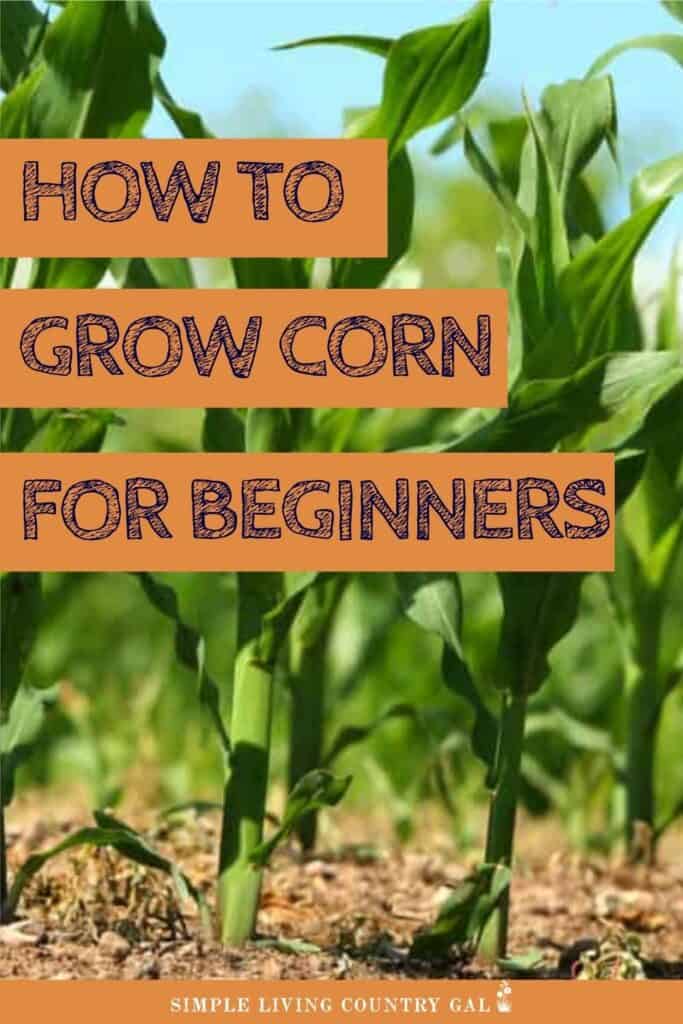
When I was little, nothing said summer quite as much as a freshly buttered ear of sweet corn. Shucking ears for the family was always my job and I can remember doing so in my shorts and bare feet outback on the patio.
I loved corn so much that I would often sneak bites from the ears as I shucked them. When dinner time came around, we often had ears with small nibbles missing, but luckily, no one let slip where they came from.
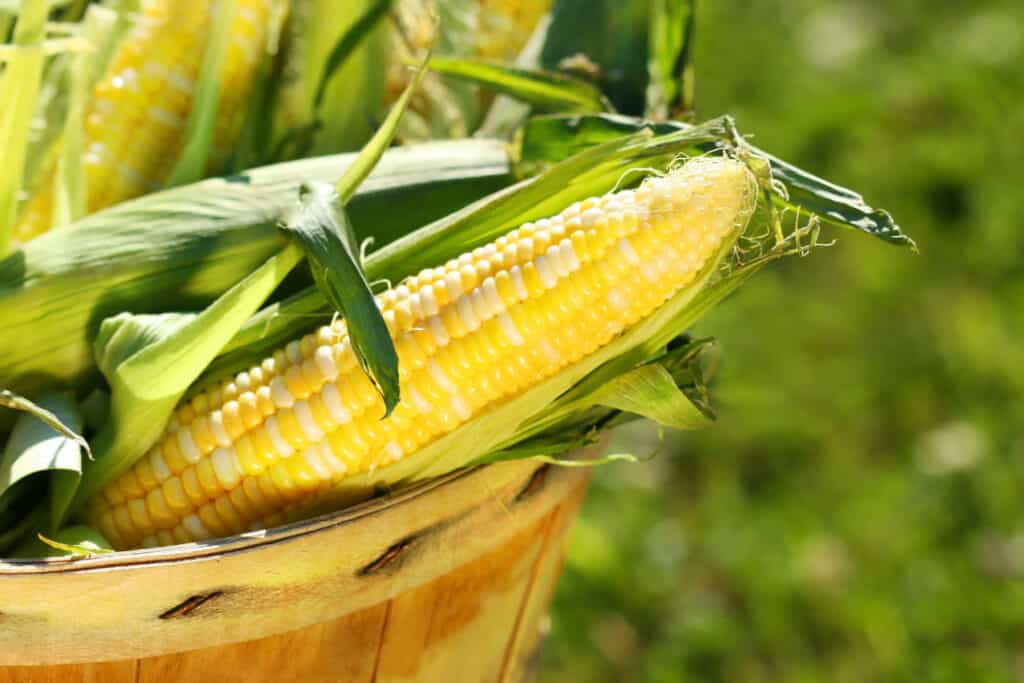
Growing corn is relatively easy to do and such a treat to see. It still amazes me how small seeds planted in the ground can quickly turn into giant stalks sometimes towering over your head.
Even though corn is routinely grown in large fields, it will also do quite nicely in small family gardens.
Sweet corn is a member of the grass family and usually grows in large fields. There are few of us that can say we have never seen a field of growing corn because it is simply a common site in most rural areas.
What is the three sisters method?
This is a way of interplanting different tuypes of plants in a garden. Usually it consists of corn, beans and squash or pumpkins. Three Sisters, uses this companion gardening technique where each plant plays a role.
Corn stalks support vining beans, and squash acts as ground cover to prevent weeds. Beans also provide a natural fertilizer for all three plants, making this technique a great example of using each plant’s natural ability to create a garden that is more resistant to disease and pests.
However, you don’t need to use this method to grow corn; it can be planted on its own and will do quite well giving you a summer harvest for your family to enjoy.
Park Seed Serendipity Triplesweet Hybrid Corn Seeds, Pack of 200 Seeds

What to Know About Growing Sweet Corn
Corn, also known as maize, was first domesticated in central Mexico before spreading through North and South America. Corn relies on wind to pollinate its flowers so planting in blocks of short rows will help it grow better than long single rows.
Corn comes in early-, mid-, and late-season varieties so the type you plant will depend on the time of year and how quickly you want to harvest. Early-season varieties are quick to mature while late-season will take a full growing season to mature. For a full season of corn, it’s best to plant several varieties so you’ll always have something ready to enjoy.
There are four types of hybrid sweet corn: sugary, sugar-enhanced, shrunken, and synergistic. Each contains a different level of sucrose, which changes the flavor and texture. The sweeter varieties will also stay sweeter for a longer period after harvesting.
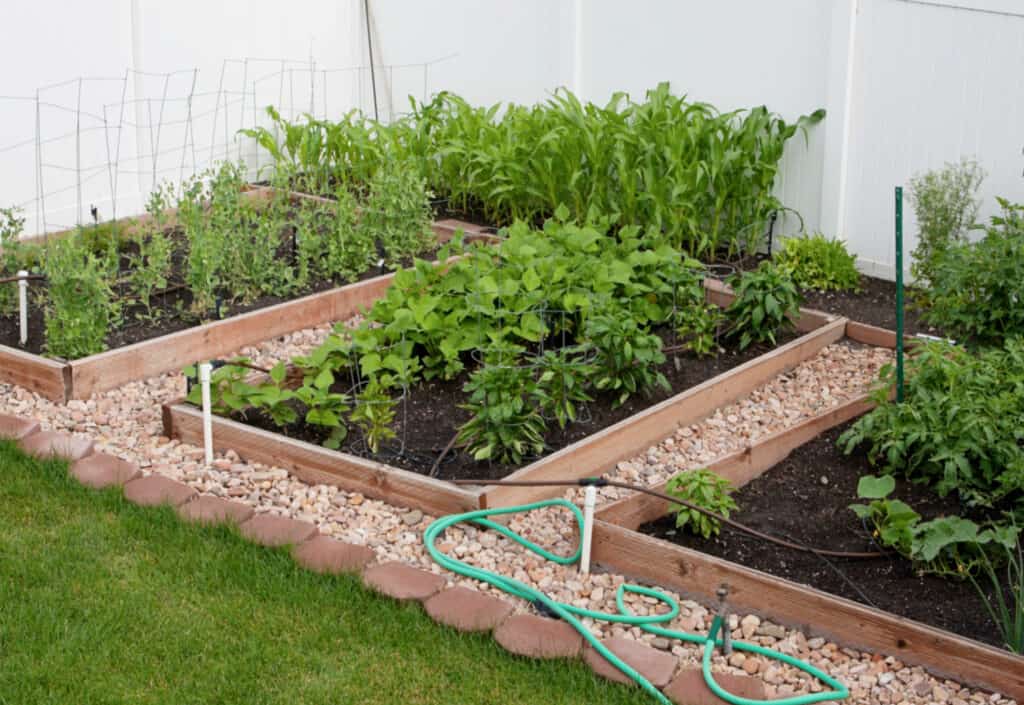
Some of the most recommended varieties of corn include:
- Argent – sugar-enhanced, white kernels
- Lochief – mid-season, sugary, yellow kernels
- Luther Hill – dwarf, sugary, white kernels
- Silver Queen – sugary, white kernels, resistant to some bacterial diseases
- Sweet Sunshine – shrunken, yellow kernels, disease resistant, high yield
- Glass Gem – multi-colored, semi-transparent
- Painted Mountain -multi-colored, natural tones
While some plants grow fine from a seedling that is started indoors and then replanted later outside, corn isn’t one of them. Replanting can disrupt their roots so it’s best to plant using seeds sown directly in your garden. The best planting time is usually two weeks after the last spring frost, but you can also research recommended planting dates for your growing region.
Since corn requires a long growing period with plenty of warm weather, it is best to plant as soon as possible. If you live in an area with shorter summers and a shorter growing season, you may want to choose an early variety of corn so that it will mature allowing you to harvest before the first fall frost.
What You Need to Grow Corn
You will need a few basic things to successfully grow corn in your own back yard.
- Good soil
- Plenty of water
- Plenty of sunshine
- Water-soluble plant food
- Mulch
Your soil will need to be well-drained with a pH of 5.5 to 6.8 and you’ll need an area that gets full sun for most of the day. Corn will grow quickly when it’s watered well so you may want to consider a soaker hose or sprinkler system to keep the soil moist.
Feeding your corn with water-soluble plant food regularly will help you harvest a bigger crop sooner. Finally, by adding a 3-inch layer of mulch you will help to keep the soil from drying out in the hot sun, and bonus, it will help to prevent weeds.
Gardening Hand Tool Set 3 Pack – MDSXO Heavy Duty Gardening Kit with Non-Slip Soft Ergonomic Handle, Great Garden Gift for Women Men[Stainless Steel]![Gardening Hand Tool Set 3 Pack - MDSXO Heavy Duty Gardening Kit with Non-Slip Soft Ergonomic Handle, Great Garden Gift for Women Men[Stainless Steel]](https://easyproductdisplays.com/wp-content/uploads/2017/07/buy6.gif)



Corn Seeds or Corn Plants
As mentioned earlier, corn grows best when planted directly in your garden as seeds and not seedlings that you’ve started indoors. Replanting can damage the root system and slow the growth of the corn or even keep it from growing altogether.
Don’t worry though, corn seeds have a high germination rate, about 75 percent, so you should end up with a good crop when planting plenty of seeds. For the highest rate of success, plant 3 seeds together about every 7-15 inches. Corn seeds germinate quickly, about 7-10 days, and you can then thin to one plant about every 15 inches to ensure plenty of spacing.
SLCG PRO TIP: To avoid disturbing the remaining plants, remove the unwanted seedlings by cutting them off at soil level instead of digging them out.
Temperature
The proper temperature is important for sweet corn to grow well. The soil needs to be at least 50° for the seeds to germinate. If it’s any colder, the seeds can sit dormant, making them vulnerable to disease, insects, and pests. At this temperature, it can take up to 3-4 weeks for the seedlings to emerge. The warmer the temperatures when you plant, the sooner the seedlings will sprout.
Air temperature is important too; it should be at least 55° or higher on a consistent, daily basis to keep the corn healthy and growing.
Sun
When growing sweet corn, it does need sun but not as much as many other plants and, because the stalks grow tall, some light shade or indirect light is best to keep the leaves from burning. Corn should receive at least six hours of sunlight a day. More light is fine as long as it’s not direct light. Planting your corn in an area near a few shade trees will give it plenty of light without giving it too much.
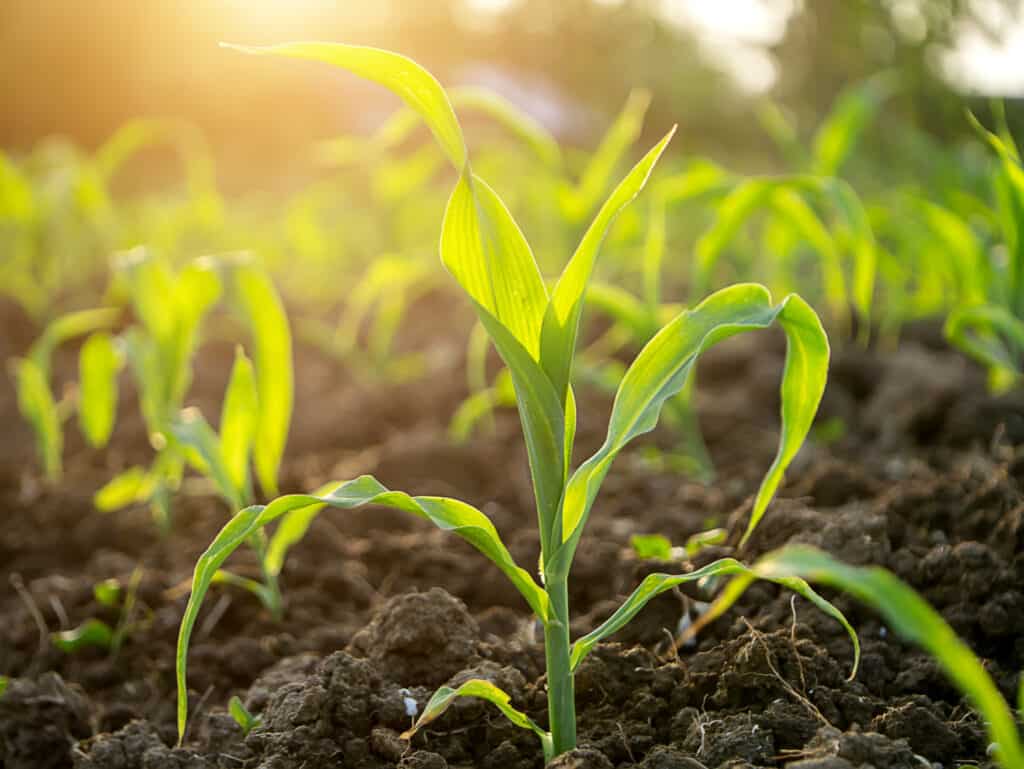
Soil
Soil temperature is very important to growing corn. The ideal temperature is at least 60° to 65° for super sweet varieties, at least 50° for any other variety. The pH level is another important factor, between 5.5 and 6.8 for the healthiest crop. If you are not sure what your soil’s PH is, you can use a simple soil testing strip to get a pretty accurate reading.
Preparing the soil with plenty of nutrients is the best way to ensure a nice harvest especially since corn plants can be a little picky about their soil. Aged manure or compost mixed into the soil will provide the best level of nutrients for your seeds to sprout healthy plants. However, timing is important here. It’s best to add the manure or compost to your soil in the fall and allow it to overwinter for the most nutrient-rich soil for your crop.
If that’s not possible, you can still mix it in prior to planting and your crop will be fine. You can plan ahead by adding manure or compost to your soil after your first growing season for a heartier crop the next year.
READ: How to Make Your Own Compost
Corn tends to need a lot of water so your soil should be moisture-retaining while also having good drainage to keep the roots from rotting.
Another important factor for planting sweet corn is in the site you choose. You’ll want to choose a good plot not just for soil and sun, but also for pollination. Instead of planting long rows, your crop will pollinate better if planted in “blocks”, at least four rows deep. Since corn is pollinated by wind, this will keep your crop within close proximity to help it self-pollinate.
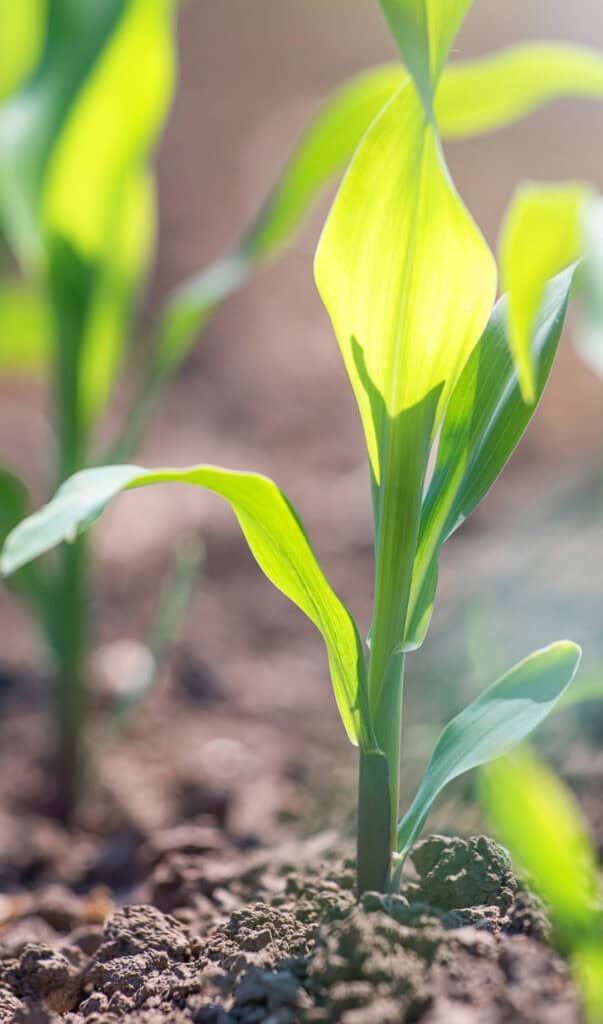
Watering
Because corn has a shallow root system, it needs to be watered regularly, keeping the soil moist. Plan to water once or twice weekly, more if the temperatures are high or your corn gets more than 6 hours of sunlight a day. The soil should be moist, not just damp. When watering, stick your finger in the soil to make sure it’s damp beneath ground level. A layer of mulch on top of the soil will help it retain more moisture and keep it from drying out.
READ: How to Use Mulch in Your Vegetable Garden
Fertilizing Sweet Corn
When growing corn, proper fertilizing will help you grow a healthier, heartier crop. Before planting sweet corn, spread a 2-inch layer of compost over your chosen plot area. This will help add nitrogen and nutrients to the soil as well as improve drainage. Then, lightly sprinkle nitrogen fertilizer (organic if possible) over the compost. Using a spade or hoe, mix the compost and fertilizer with the soil until the mixture is about 4-6 inches deep. Once this is done, you’re ready to plant.
When the plants are about 4 inches tall, but before they reach 8 inches, use a 16-16-18 liquid fertilizer and add a few inches of organic mulch to the top of the soil. Repeat the fertilization when the plants reach about 10 inches in height, preferably as side-dressing. Avoid applying it directly to the plants.
Add a 46-0-0 (all nitrogen) fertilizer and spread it in a line on the soil’s surface, about 6 inches from the row of corn. Water, as usual, to help the nitrogen make its way down to the root system.
SLCG PRO TIP: Fertilizer can get so confusing and that is why I like to rely on the experts for help. Go to your local lawn and garden store and ask for the ratio fertilizer you need. They can usually help you or at least guide you in the right direction.
Do this process one last time when the corn ears begin to produce silk.
How Many Seeds to Plant
Depending on how often you eat corn, you’ll want to grow 10-5 plants per person in your household. Plant 2-3 seeds per hole then remove extra seedlings as they grow to ensure that each hole produces a plant.
Be sure to remove the seedlings at ground level so you don’t disturb the root system of the surviving plant.
How to Plant Corn
After checking for sunlight, choosing your plot, and preparing your soil, you’re ready to plant sweet corn. Remember to plan your plot in a “block” arrangement instead of long rows for better pollination.
Sow your sweet corn seeds about 1-2 inches deep and 4-6 inches apart in each row. Rows should be spaced 30-36 inches apart. Remember to fertilize and water well at planting time and check the soil moisture daily to make sure your seeds stay properly hydrated.
Once the corn plants are about 3-4 inches tall, it’s best to thin them out so that they are 8-12 inches apart in a row. This will give them plenty of room to flourish while still helping them pollinate well. Be careful not to damage the roots when weeding, try to only remove weeds at the soil level using your other hand to gently keep the other plants safe and secure in the soil.
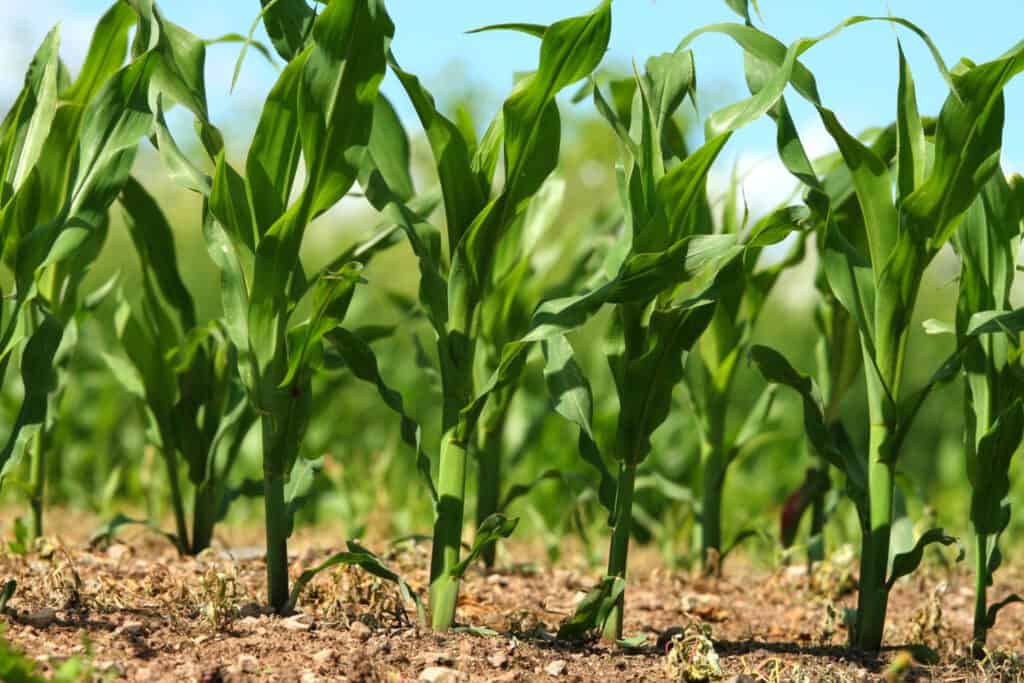
When to Harvest Sweet Corn
Growing sweet corn typically takes 60-100 days, depending on the variety, from planting to harvesting. Corn is ready to harvest when the ears turn dark green, the silks turn brown, and the kernels are plump and soft. When you squeeze a kernel, the juice should be milky, not clear.
To harvest, simply pull the ears downward and twist to remove them off the stalk. Once harvested you will want to either preserve the corn immediately or consume it within a week.
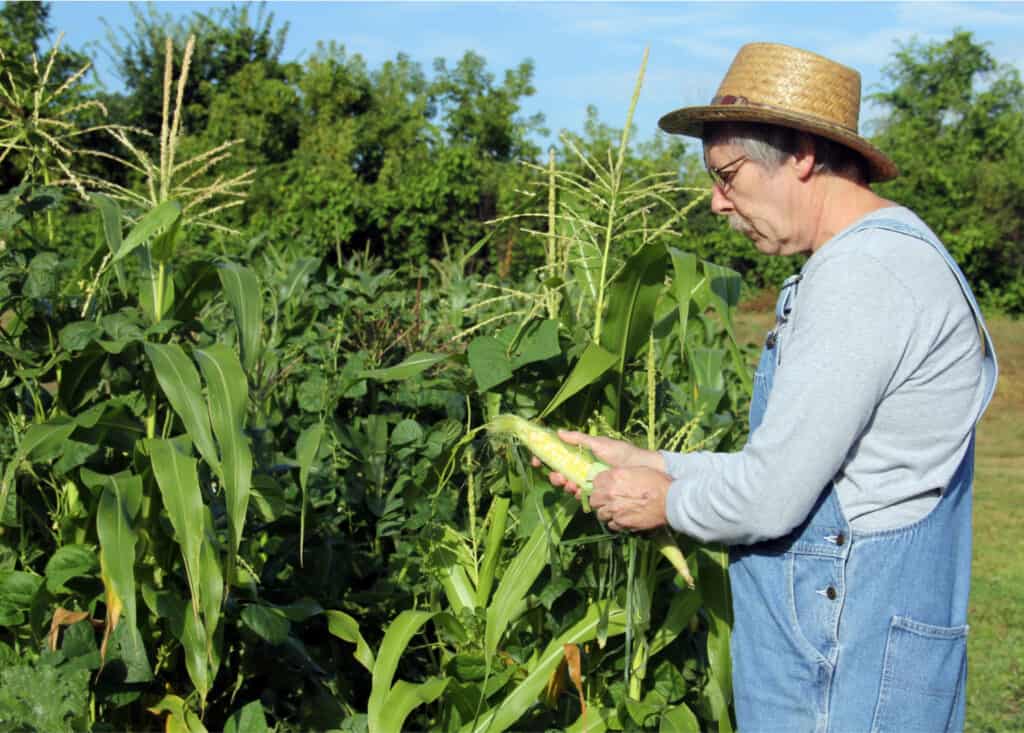
Can Corn Be Planted in Containers?
It may surprise you to know that you can plant corn in containers. Proper growth of the ears does depend on the right containers and the proper size starting out. Your container will need to be large enough to support a full-grown plant while providing proper drainage.
The container should be at least 12 inches wide and 12 inches deep for each stalk. To keep your container balanced, limit your plantings to one each. For this reason, you may want to choose corn that produces shorter stalks, like Trinity or Sweet Painted Mountain. Keep the variety you choose constant when using containers. Because of the importance of pollination, you will want to keep your corn containers close together.
Things to Watch for When Growing Corn
There are several pests to keep a watch out for:
- Raccoons
- Deer
- Spotted Cucumber Beetles
- Flea Beetles
- Cutworms
- Corn earworms
Pests can cause the corn plants to be stunted so try to keep an eye on your plants as they grow. If you notice any disease or pest attacking a corn plant, remove the plant to keep the virus from spreading.
The best practices for prevention include keeping the garden clean of weeds, not overwatering, rotating your crop, and planting resistant sweet corn hybrids. If you live in a high deer or raccoon area you can install temporary fencing to help keep your stalks safe.
How to Store Corn
Corn loses its sweetness and nutrients shortly after harvesting. For that reason, it is best to enjoy it quickly or remove it from the cobs for pickling, canning, or freezing. If you plan to preserve your harvest do not pick it until the day you do. The best way to do this is to prepare your supplies before harvesting, then pick, shuck, and preserve. This is a great time to enlist your family for help. Many memories of laughter and fun happen in a kitchen so what better time to do this than on a warm summer day.
Are you ready to grow corn in your very own backyard garden? Sweet corn is great for beginner gardeners because it’s easy to plant and maintain, doesn’t require a lot of space for a small family, and doesn’t need a lot of sunlight.
You can quickly and easily start growing sweet corn this season, in your yard or in containers, to enjoy with your family.




![Gardening Hand Tool Set 3 Pack - MDSXO Heavy Duty Gardening Kit with Non-Slip Soft Ergonomic Handle, Great Garden Gift for Women Men[Stainless Steel]](https://m.media-amazon.com/images/I/41qgPIFVlJL._SL500_.jpg)



